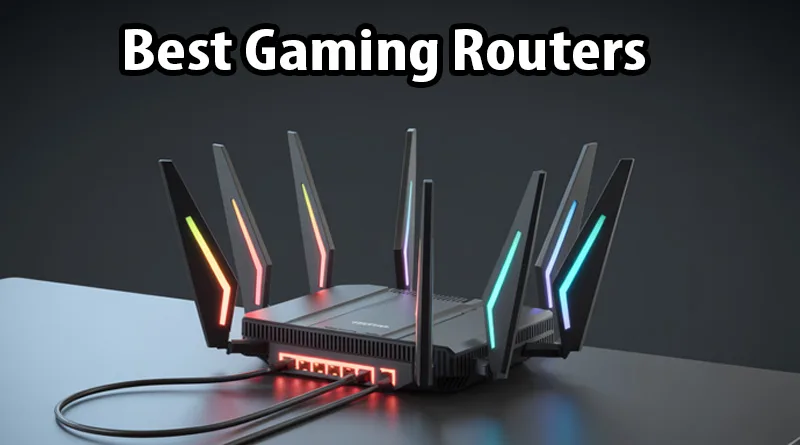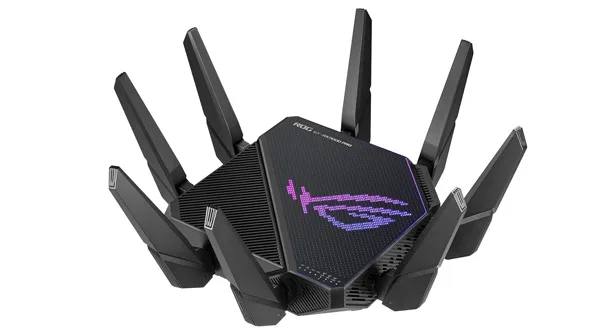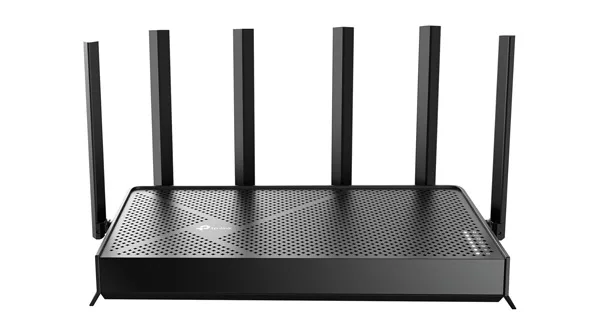For the serious online player, the router is no longer a passive utility—it is a performance component. A cheap, ISP-provided router is the silent killer of competitive potential, failing to manage traffic, spiking your ping, and causing frustrating lag. To truly eliminate latency and ensure your game packets are prioritized, you need the best gaming router available.
This ultimate guide breaks down the essential technologies that define a true gaming router: advanced Quality of Service (QoS), multi-gigabit ports, and dedicated low-latency Wi-Fi bands. We review the top models on the market today and explain the features that will turn your connection from a chaotic mess into a dedicated gaming expressway. If you’ve been asking what is ping in gaming , this is the guide to the solution.
Top 5 Best Gaming Routers of 2025: Our Ranked Picks
These routers represent the pinnacle of gaming-focused networking, built with the processing power and specialized software to defeat lag. Targeting high-commission products for affiliate revenue.
1. Overall Best Performance (The Flagship): ASUS ROG Rapture Series (Wi-Fi 7/6E)
- Key Feature: Unmatched processing power, proprietary ASUS Game Boost QoS (often called Game Radar/First Packet), and built-in triple-level game acceleration. It consistently provides the lowest average latency across both wired and Wi-Fi connections.
- Best For: The competitive esports player or streamer with multiple high-demand users in the household.
2. Best for High-Speed Fiber Internet: Netgear Nighthawk Series (Multi-Gig Ports)
- Key Feature: Often features 5Gbps or 10Gbps WAN/LAN ports, making it perfect for the fastest fiber internet connections. Strong range and excellent proprietary traffic monitoring software.
- Best For: Users with a multi-gigabit ISP plan who need to ensure the router doesn’t bottleneck their raw speed.
3. Best Value Gaming Router: TP-Link Archer/Mercusys (Budget Wi-Fi 6)
- Key Feature: Provides the essential benefits of Wi-Fi 6 (OFDMA, better capacity) at a fraction of the cost. The best entry point for a dedicated gaming router upgrade.
- Best For: The casual or mid-range gamer looking for a major stability upgrade from an old ISP router without spending a fortune.
4. Best Mesh System for Large Homes: NETGEAR Orbi Pro / ASUS ZenWiFi (Tri-Band)
- Key Feature: Uses a dedicated third band (Tri-Band) for backhaul (communication between nodes), ensuring that the main 5GHz or 6GHz bands are left free for client devices.
- Best For: Gamers in large, multi-story homes where a single router cannot cover the entire house, but who still need low latency in every room.
5. Best for Advanced Control: GL.iNet or Custom Firmware Routers
- Key Feature: Allows users to install custom, open-source firmware (like OpenWRT) for advanced, manual control over VPNs, firewalls, and deep traffic shaping beyond what commercial routers offer.
- Best For: Technical users who want absolute, granular control over every aspect of their network.
Feature Deep Dive: What Makes a Router “Gaming”?
A “gaming router” is more than just RGB lights and aggressive styling. The best gaming router is defined by three critical low-latency technologies that manage network congestion.
1. Quality of Service (QoS) — The Ping Eliminator
QoS is the most critical software feature. It is a set of rules that prioritizes certain types of data traffic over others.
- Function: When your sibling starts streaming 4K video, the router recognizes their data as “low priority” and your game data as “high priority,” immediately sending your game packets first. This prevents the “ping spikes” that ruin competitive play.
- Look For: Routers with Adaptive or Smart QoS that automatically identify game traffic, or those that allow you to manually prioritize specific devices (your PC/Console).
2. Multi-Gigabit Ports (Future-Proofing)
Most routers top out at 1 Gigabit Ethernet (1000Mbps). Modern gaming and high-speed fiber internet can exceed this.
- WAN/LAN Ports: Look for routers with a dedicated 2.5Gbps or 5Gbps WAN port to handle multi-gigabit internet plans, and at least one 2.5Gbps LAN port to connect your primary gaming PC or console. This ensures the router doesn’t bottleneck your connection speed.
3. The Dedicated 6GHz Band (Wi-Fi 6E/7)
The biggest Wi-Fi innovation is the introduction of the 6GHz band in Wi-Fi 6E and Wi-Fi 7 routers.
- The Problem: The standard 2.4GHz and 5GHz bands are congested by old devices, microwaves, and neighbors. This congestion increases latency.
- The Solution: The 6GHz band is dedicated, clean, and uncrowded. It serves as a private, low-latency express lane for your newest gaming devices, making it the best gaming router feature for Wi-Fi users.
Router Setup Checklist for Minimal Lag
To get the most out of your best gaming router, the setup is as important as the hardware itself.
- Go Wired: Always connect your gaming PC/Console to the router via a wired Ethernet cable. This is non-negotiable for competitive play.
- Use the 5GHz/6GHz Band: For wireless devices, connect them only to the high-frequency 5GHz or 6GHz band, which offers higher speeds and lower latency than the 2.4GHz band.
- Enable QoS: Log into the router’s settings and set your gaming device to the absolute highest priority.
- Firmware Updates: Always keep the router’s firmware updated, as manufacturers frequently release updates that improve stability and security.
Conclusion: Stop Blaming the Server and Upgrade the Router
The single best way to reduce lag and ping spikes is to replace a weak, generic router with the best gaming router you can afford. The investment pays for itself immediately in improved competitive performance and stability.
By prioritizing QoS, multi-gigabit ports, and the clean 6GHz band, you ensure that your game data is always the first one through the network gate. Don’t let your connection be the reason you lose the match.






